Comments / Questions (32)
![]() Ellen wrote:
Ellen wrote:
Er nesten ferdig med å strikke Lamb Dance jakke i størrelse 11/12. Har en halv arm igjen og garnet strekker ikke til. I mønsteret står det 300 g med fargen med fargen pistasj som er forlite. Det må våre 350 g. Vennligst rett opp. Er spent på om det er mulig å finne garnet med samme fargnings nummer.
05.02.2025 - 13:29
![]() Ellen wrote:
Ellen wrote:
Str. 11/12. Strikket mønster i 18 omganger. Har 211 m. med mønster+riller. Startet 18.omg. med A2 1m+A2 med 5m blå, 5m hvit,5m blå osv. Avlutter med 5m hvit som ikke stemmer med mønsteret. Får 1/2 sau på venstre side. Er dette feil? Ser ut som at maskeantallet er riktig.
05.01.2025 - 14:14DROPS Design answered:
Hei Ellen. Ser ut som du har feil maskeantall. Du startet med 109 masker når du starter med diagram A.1/A.2. Da strikkes det 5 stolpemasker + A.1 (7 masker x 14 ganger) + A.2 (1 maske) + 5 stolpemasker = 109 masker. Når du har strikket 18 pinner av diagrammet har du økt 8 masker pr gang du har strikket diagrammet (14 x 8 = 112 masker + 109 masker = 221 masker. Da skal du få "hele" sauer omgangen rundt. mvh DROPS Design
07.01.2025 - 15:41
![]() Ellen wrote:
Ellen wrote:
Ønsker å strikke denne jakken, men finner ikke fargen 17 cerise. Kan dere foreslå en annet alternativ farge?
13.11.2024 - 13:00DROPS Design answered:
Hei Ellen, Du kunne kjøpe nr 25 rosa, eller for en sterkere kontrast nr 34 lyng. God fornøyelse!
14.11.2024 - 07:10
![]() Richtje Wijnen wrote:
Richtje Wijnen wrote:
Wat voegt telpatroon A2 toe? Ik snap dat niet.
14.04.2024 - 11:41DROPS Design answered:
Dag Richtje,
Patroon A.2 is toegevoegd om het patroon symmetrisch te maken bij de sluiting voor.
15.04.2024 - 21:22
![]() Yvonne Johansson wrote:
Yvonne Johansson wrote:
Kan man sticka denna kofta i något av era bomullsgarn?
02.01.2024 - 18:30DROPS Design answered:
Hej Yvonne, ja, du kan sticka den i DROPS Muskat och DROPS Cotton Light och DROPS Cotton Merino - testa garnkalkulatorn för att se hur mycket du behöver i din storlek :)
03.01.2024 - 07:58
![]() Margriet Sijm wrote:
Margriet Sijm wrote:
Patroon Lambs Dance, Wat betekent een omstreek verhouding? Ik brei nu het pasje, ik kom niet uit het aantal steken, ik ben nu bij pen 31, patroon A1,maat 146/152 , ik heb nu 222 steken, nog 2 x meerderen, dan kom ik aan het einde van de pas niet aan het 292 steken. Wat gaat er verkeerd? Graag reactie. Vriendelijke groet, Margriet S.
15.11.2023 - 16:20DROPS Design answered:
Dag Margriet,
A.1 heeft op het eind 20 steken in de breedte en omdat je A.1 14 keer in de breedte herhaalt heb je 280 steken, plus de steek van A.2 en de 5 voorbiessteken aan elke kant = 299 steken. Wanneer je nog 2 keer meerderingen moet maken zou je 263 steken op de naald moeten hebben. Waarschijnlijk is er ergens iets mis gegaan... Het is jammer dat ik niet mee kan kijken vanaf hier. Misschien heb je een ander aantal herhalingen?
18.11.2023 - 15:03
![]() Jaroslava Hudrlíková wrote:
Jaroslava Hudrlíková wrote:
Nerozumím tomu pletení vzoru dle nákresu. Mezi jednotlivými 7 oky je kolik ok než pokračuji znova 7mi okami. Děkuji.
03.07.2023 - 17:31
![]() Marianne Verduin wrote:
Marianne Verduin wrote:
Bij het telpatroon: zijn daar alleen de naalden aan de goede kant aangegeven of de heen en weer naalden?
27.10.2022 - 09:24DROPS Design answered:
Dag Marianne,
In de telpatronen zijn altijd alle naalden weergegeven, dus zowel de heengaande als de teruggaande naalden.
27.10.2022 - 20:47
![]() Marianne Verduin wrote:
Marianne Verduin wrote:
Waar vind ik telpatroon A2?
25.10.2022 - 20:04DROPS Design answered:
Dag Marianne,
Deze staat naast telpatroon A.1 en is 1 steek breed.
26.10.2022 - 08:39
![]() Cathy Dicharrry wrote:
Cathy Dicharrry wrote:
J'ai fait le même modèle 3 fois, 1fois en taille 9/10 et 2 fois en taille 5/6 ans. Je trouve que les augmentations ne sont pas bien réparties, pas régulières donc l'allure du gilet est un peu bizarre... Dommage ! Je joins une photo de l'un d'entre eux...
14.10.2022 - 12:44
Lamb Dance#lambdancecardigan |
|||||||||||||||||||
 |
 |
||||||||||||||||||
Knitted jacket for kids in DROPS Merino Extra Fine or DROPS Lima. Piece is knitted top down with sheep, color pattern, ribs and stockinette stitch. Size 3-12 years
DROPS Children 34-1 |
|||||||||||||||||||
|
---------------------------------------------------------- EXPLANATION FOR THE PATTERN: ---------------------------------------------------------- PATTERN: See diagrams A.1 and A.2. Choose diagram for your size. Diagrams show all rows in pattern seen from the right side. DECREASE/INCREASE TIP (evenly): To calculate how to decrease evenly, use the total number of stitches on row (e.g. 84 stitches) minus the band stitches (e.g. 10 stitches) = 74 and divide stitches by number of decreases to be done (e.g. 7) = 10,5. In this example decrease by work alternately every 9th and 10th /10th and 11th stitch together. To increase use the same calculation but make instead a yarn over after alternately every 10th and 11th stitch. Work yarn overs twisted on next row to avoid holes. INCREASE TIP-2 (applies to sides of body): Work until 1 stitch remains before marker thread, 1 yarn over, knit 2 (marker thread is in the middle of these stitches), 1 yarn over = 2 stitches increased. On next row work yarn overs twisted to avoid holes. Then work the new stitches in stockinette stitch. DECREASE TIP-2 (applies to sleeves): Decrease 1 stitch on each side of marker thread as follows: Work until 3 stitches remain before marker thread, knit 2 together, knit 2 stitches (marker thread is between these stitches), slip 1 stitch knitwise, knit 1, pass slipped stitch over stitch worked = 2 stitches decreased. BUTTONHOLES: Decrease for buttonholes on right band (when garment is worn). 1 buttonhole = begin from wrong side and knit 2nd and 3rd stitch from edge together, make 1 yarn over. On next row knit yarn over to make holes. Decrease for first buttonhole after 2 cm on neck edge, then decrease the next 5-5-6-6-6 buttonholes every 6-7-6½-7-8 cm = 2⅜"-2¾"-2½"-2¾"-3⅛". ---------------------------------------------------------- START THE PIECE HERE: ---------------------------------------------------------- JACKET - SHORT OVERVIEW OF THE PIECE: Piece is worked back and forth on circular needle, top down, then work front and back piece back and forth. Work sleeves in the round on double pointed needles/a short circular needle. YOKE: Cast on 84-88-100-112-116 stitches on circular needle size 3 mm = US 2,5 with light grey blue. Purl 1 row from wrong side. Work next row as follows from right side: 5 band stitches in GARTER STITCH - see explanation above - * knit 2, purl 2 *, repeat from *-* until 7 stitches remain, finish with knit 2 and 5 band stitches in garter stitch. Continue rib like this for 3 cm = 1⅛" – remember BUTTONHOLES on right band – see explanation above and finish after 1 row from right side (= neck edge). Switch to circular needle size 4 mm = US 6. Purl 1 row from wrong side while decreasing 7-5-5-10-7 stitches evenly - read DECREASE/INCREASE TIP = 77-83-95-102-109 stitches. Work as follows from right side: 5 band stitches in garter stitch, work pattern according to A.1 until 6 stitches remain on row - NOTE: Choose diagram for correct size (= 11-12-12-13-14 repetitions of 6-6-7-7-7 stitches), work A.2 over 1 stitch and finish with 5 band stitches in garter stitch. Continue pattern like this and increase as shown in diagram - read KNITTING TIP and REMEMBER KNITTING GAUGE. When A.1 and A.2 have been worked, there are 209-227-251-271-291 stitches on needle. Continue in pistachio, on next row from right side work in stockinette stitch (garter stitch over band stitches) and increase 13-11-5-1-1 stitch on needle = 222-238-256-272-292 stitches on needle. Work in stockinette stitch (garter stitch over band stitches) until piece measures approx. 18-18-19-20-21 cm = 7"-7"-7½"-8"-8¼" from cast-on edge. Work next row from right side as follows: Work 5 band stitches in GARTER STITCH, work 31-33-36-36-37 stitches in stockinette stitch (= front piece), slip the next 44-48-51-54-62 stitches on a stitch holder (= sleeve), cast on 6 new stitches under sleeve, work 62-66-72-82-84 stitches in stockinette stitch (= back piece), slip the next 44-48-51-54-62 stitches on a new stitch holder (= sleeve), cast on 6 new stitches, work 31-33-36-36-37 stitches (= front piece) and work 5 band stitches in GARTER STITCH. BODY: There are now 146-154-166-176-180 stitches on needle. NOW MEASURE PIECE FROM HERE! Insert 1 marker thread in the middle of the 6 new stitches cast on in each side. Work in stockinette stitch back and forth with 5 band stitches in garter stitch in each side. When piece measures 3 cm = 1⅛", increase 1 stitch on each side of each marker thread (= 4 stitches increased) - read INCREASE TIP-2! Repeat increase every 3-4-5-6-7 cm = 1⅛"-1½"-2"-2⅜"-2¾" 3 times in total = 158-166-178-188-192 stitches on needle. Then work as before until piece measures approx. 12-16-19-22-25 cm = 4¾"-6¼"-7½"-7¾"-9¾" (or to desired length, there is approx. 4 cm = 1½" until finished measurements). . Work 1 row in stockinette stitch from right side while increasing 10-6-6-8-12 stitches evenly (do not increase over band stitches) = 168-172-184-196-204 stitches. Switch to circular needle size 3 mm = US 2,5 and work next row from wrong side as follows: Work 5 band stitches in garter stitch, purl 2, * knit 2, purl 2 *. Work from *-* until the 5 stitches remain and work 5 band stitches in garter stitch. Work as follows from right side: 5 band stitches in garter stitch, knit 2, * purl 2, knit 2 *, repeat from *-* until 5 stitches remain and work 5 band stitches in garter stitch. Continue rib like this until it measures 4 cm = 1½". On next row from right side loosely bind off with garter stitch over garter stitch, knit over knit and purl over purl. Cut and fasten the yarn. SLEEVE: Slip stitches from on stitch holder back on a short circular needle/double pointed needles size 4 mm = US 6 (= 44-48-51-54-62 stitches), pick up 1 stitch in each of the 6 stitches cast on on body (= 50-54-57-60-68 stitches). Insert 1 marker thread in the middle of these 6 stitches. Work in stockinette stitch in the round until sleeve measures 2 cm = ¾". Now decrease 1 stitch on each side of marker thread - read DECREASE TIP-2! Continue in stockinette stitch and repeat decrease every 4-3½-4-4-3½ cm = 1½"-1¼"-1½"-1½"-1¼" until decrease has been done 5-7-7-8-10 times in total = 40-40-43-44-48 stitches on needle. Work in stockinette stitch until sleeve measures 21-26-29-33-36 cm = 8¼"-10¼"-11⅜"-13"-14¼". Knit 1 round and increase 4-4-5-4-4 stitches on round = 44-44-48-48-52 stitches. Switch to double pointed needles size 3 mm = US 2,5 and work rib in the round with knit 2/purl 2 for 4 cm = 1½". Loosely bind off stitches with knit over knit and purl over purl. Cut and fasten the yarn. Work the other sleeve the same way. |
|||||||||||||||||||
Diagram explanations |
|||||||||||||||||||
|
|||||||||||||||||||

|
|||||||||||||||||||
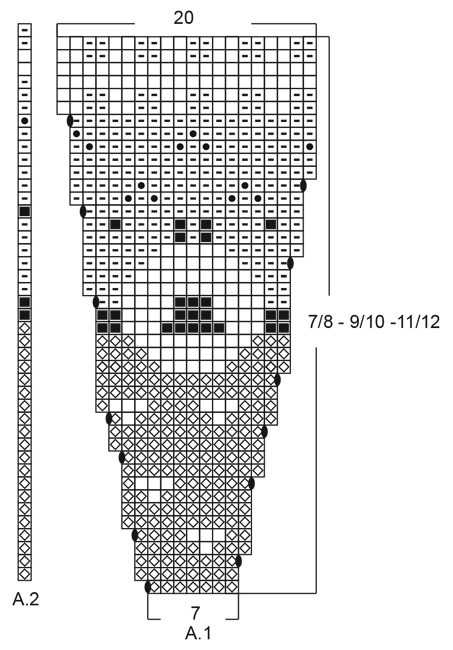
|
|||||||||||||||||||
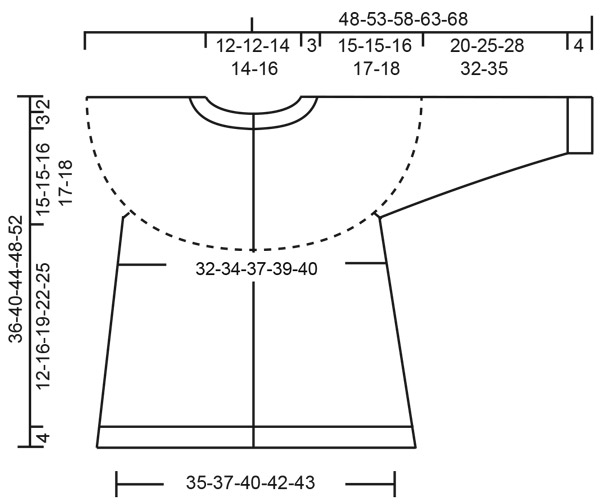
|
|||||||||||||||||||
Have you finished this pattern?Tag your pictures with #dropspattern #lambdancecardigan or submit them to the #dropsfan gallery. Do you need help with this pattern?You'll find 28 tutorial videos, a Comments/Questions area and more by visiting the pattern on garnstudio.com. © 1982-2025 DROPS Design A/S. We reserve all rights. This document, including all its sub-sections, has copyrights. Read more about what you can do with our patterns at the bottom of each pattern on our site. |
|||||||||||||||||||







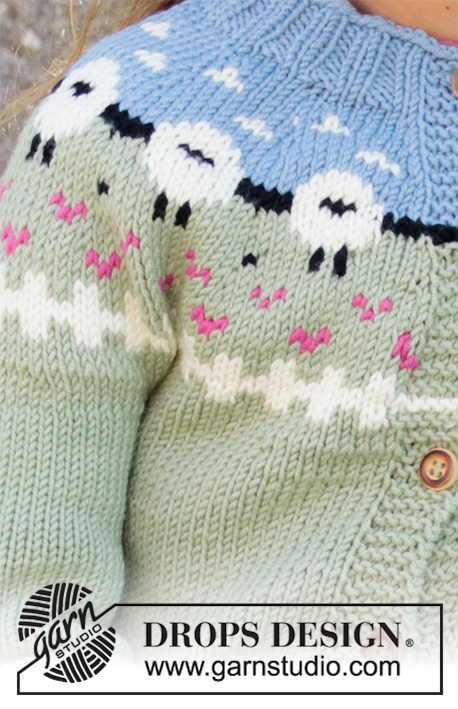

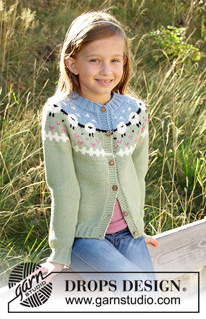





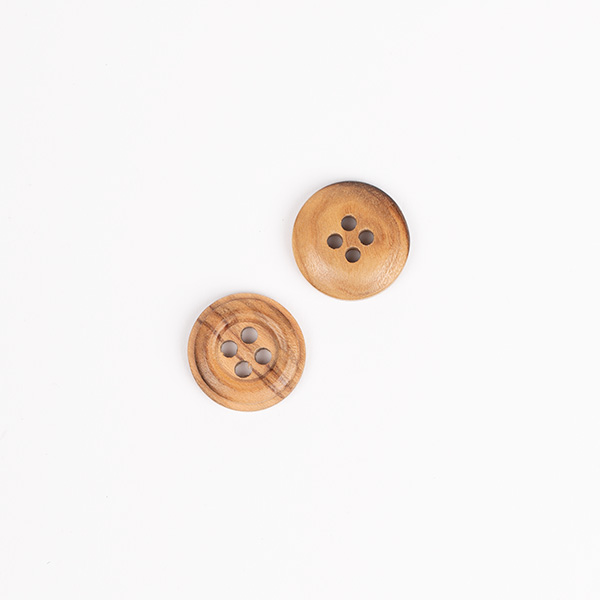

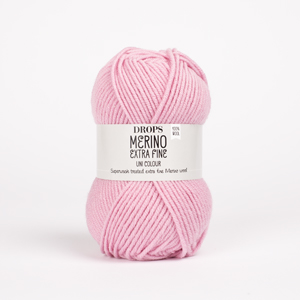
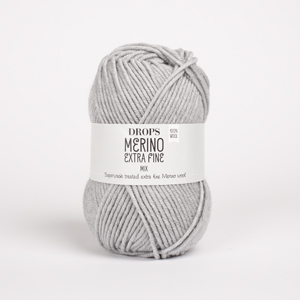
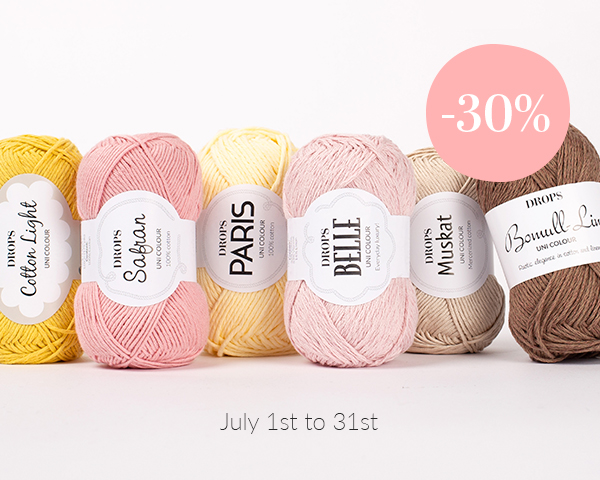



















































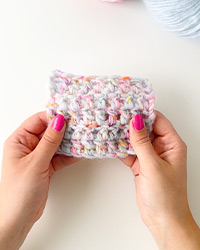
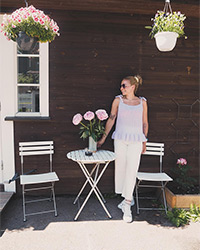
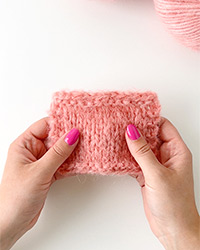
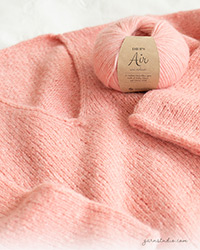


Post a comment to pattern DROPS Children 34-1
We would love to hear what you have to say about this pattern!
If you want to leave a question, please make sure you select the correct category in the form below, to speed up the answering process. Required fields are marked *.